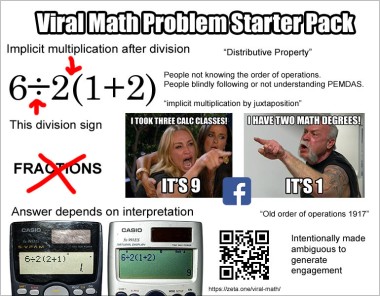6÷2(1+2)
I wrote a (very long) blog post about those viral math problems and am looking for feedback, especially from people who are not convinced that the problem is ambiguous.
It's about a 30min read so thank you in advance if you really take the time to read it, but I think it's worth it if you joined such discussions in the past, but I'm probably biased because I wrote it :)
